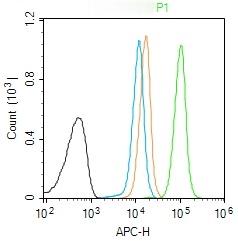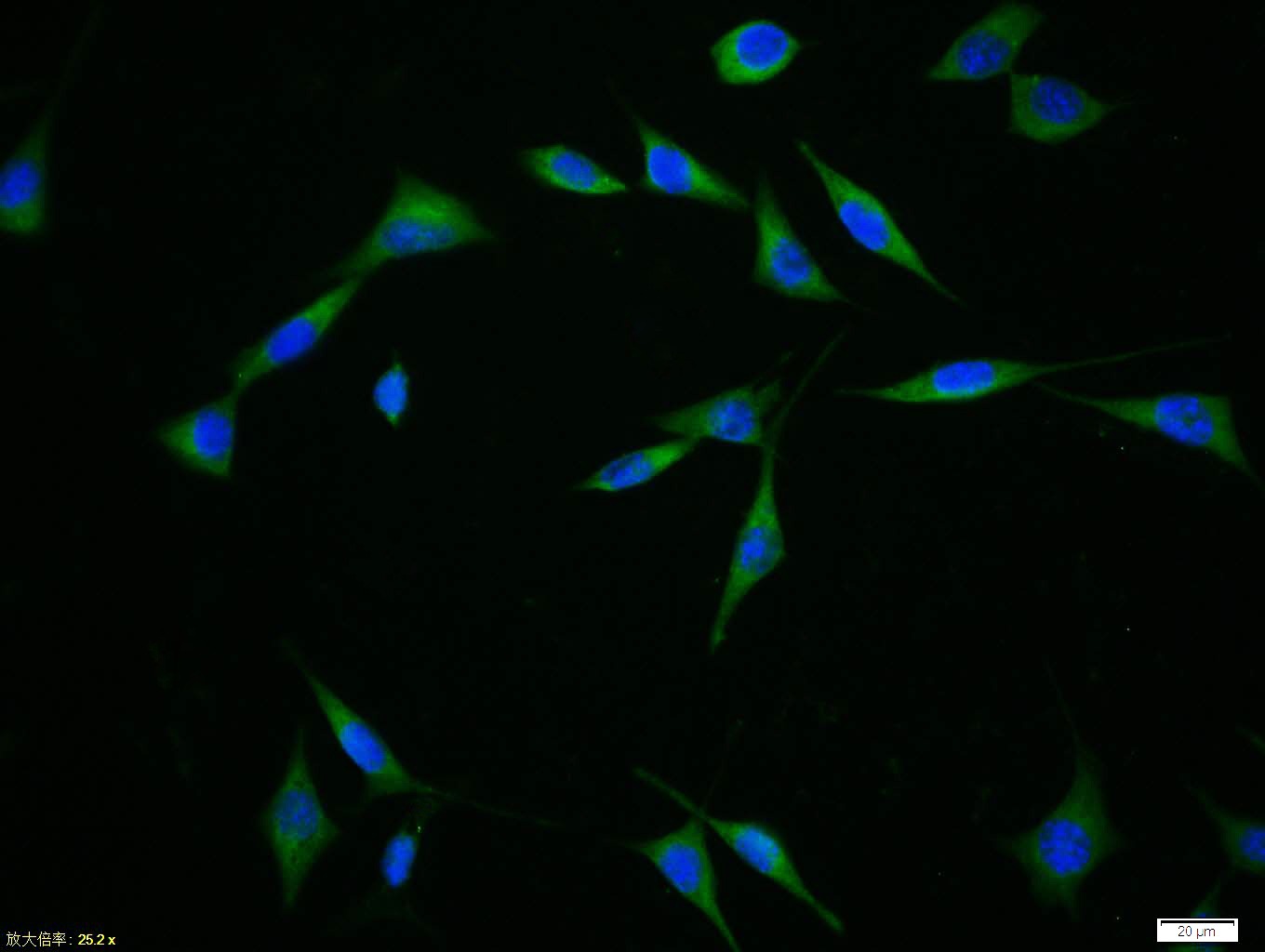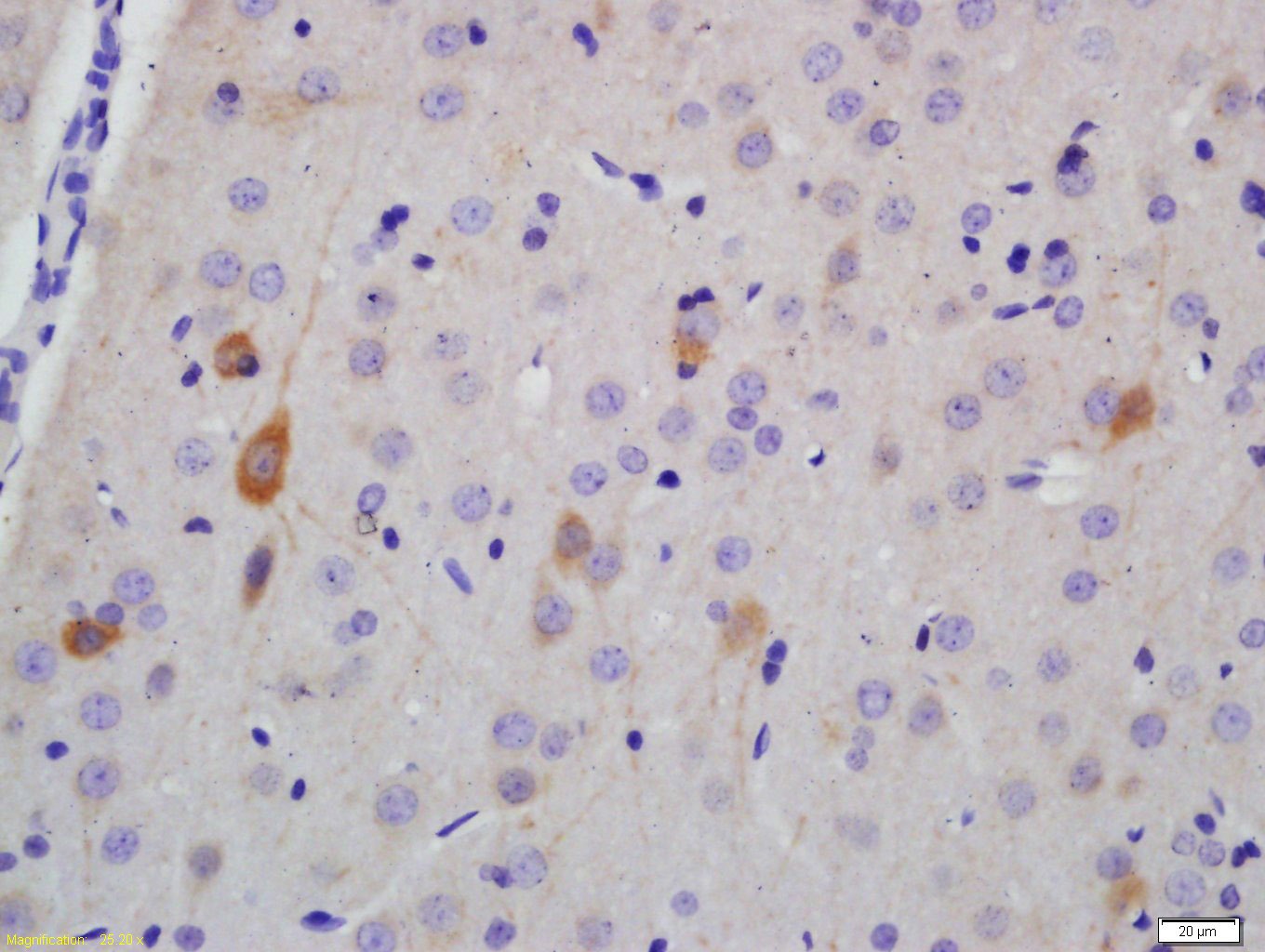购物车
全部删除  您的购物车当前为空
您的购物车当前为空
别名 NF-H, NFH, Neurofilament triplet H protein, Neurofilament heavy polypeptide, NEFH, KIAA0845, 200 kDa neurofilament protein
Anti-NEFH Polyclonal Antibody 2 是一种 Rabbit 抗体,靶向 NEFH。Anti-NEFH Polyclonal Antibody 2 可用于 FCM,ICC/IF,IF,IHC-Fr,IHC-P。
Anti-NEFH Polyclonal Antibody 2 是一种 Rabbit 抗体,靶向 NEFH。Anti-NEFH Polyclonal Antibody 2 可用于 FCM,ICC/IF,IF,IHC-Fr,IHC-P。
| 规格 | 价格 | 库存 | 数量 |
|---|---|---|---|
| 50 μL | ¥ 1,160 | 5日内发货 | |
| 100 μL | ¥ 1,975 | 5日内发货 | |
| 200 μL | ¥ 2,795 | 5日内发货 |
| 产品描述 | Anti-NEFH Polyclonal Antibody 2 is a Rabbit antibody targeting NEFH. Anti-NEFH Polyclonal Antibody 2 can be used in FCM,ICC/IF,IF,IHC-Fr,IHC-P. |
| 别名 | NF-H, NFH, Neurofilament triplet H protein, Neurofilament heavy polypeptide, NEFH, KIAA0845, 200 kDa neurofilament protein |
| Ig Type | IgG |
| 交叉反应 | Human,Rat (predicted:Mouse,Dog,Pig,Cow,Rabbit,Sheep) |
| 验证活性 | 1. Blank control (Black line): Molt4 (Black). Primary Antibody (green line): Rabbit Anti-NF-H antibody (TMAB-01212) Dilution: 1 μg/10^6 cells; Isotype Control Antibody (orange line): Rabbit IgG. Secondary Antibody (white blue line): Goat anti-rabbit IgG-AF647 Dilution: 1 μg/test. Protocol The cells were fixed with 4% PFA (10 min at room temperature) and then permeabilized with 90% ice-cold methanol for 20 min at room temperature. The cells were then incubated in 5% BSA to block non-specific protein-protein interactions for 30 min at room temperature. Cells stained with Primary Antibody for 30 min at room temperature. The secondary antibody used for 40 min at room temperature. 2. Tissue/cell: SH-SY5Y cell; 4% Paraformaldehyde-fixed; Triton X-100 at room temperature for 20 min; Blocking buffer (normal goat serum) at 37°C for 20 min; Antibody incubation with (NF-H) polyclonal Antibody, Unconjugated (TMAB-01212) 1:100, 90 minutes at 37°C; followed by a FITC conjugated Goat Anti-Rabbit IgG antibody at 37°C for 90 minutes, DAPI (blue) was used to stain the cell nucleus. 3. Tissue/cell: rat brain tissue; 4% Paraformaldehyde-fixed and paraffin-embedded; Antigen retrieval: citrate buffer (0.01M, pH6.0), Boiling bathing for 15 min; Block endogenous peroxidase by 3% Hydrogen peroxide for 30 min; Blocking buffer (normal goat serum) at 37°C for 20 min; Incubation: Anti-NF-H Polyclonal Antibody, Unconjugated (TMAB-01212) 1:200, overnight at 4°C, followed by conjugation to the secondary antibody and DAb staining.    |
| 应用 | FCMICC/IFIFIHC-FrIHC-P |
| 推荐剂量 | IHC-P: 1:100-500; IHC-Fr: 1:100-500; ICC/IF: 1:100; IF: 1:100-500; FCM: 1:ug/Test |
| 抗体种类 | Polyclonal |
| 宿主来源 | Rabbit |
| 构建方式 | Polyclonal Antibody |
| 纯化方式 | Protein A purified |
| 性状 | Liquid |
| 缓冲液 | 0.01M TBS (pH7.4) with 1% BSA, 0.02% Proclin300 and 50% Glycerol. |
| 浓度 | 1 mg/mL |
| 研究背景 | Neurofilaments can be defined as the intermediate or 10nm filaments found in specifically in neuronal cells. When visualised using an electron microscope, neurofilaments appear as 10nm diameter fibres of indeterminate length that generally have fine wispy protrusions from their sides. They are particularly abundant in axons of large projection neurons. They probably function to provide structural support for neurons and their synapses and to support the large axon diameters required for rapid conduction of impulses down axons. Neurofilaments are composed of a mixture of subunits, which usually includes the three neurofilament triplet proteins neurofilament light (NFL), neurofilament medium (NFM) and neurofilament heavy (NFH). Neurofilaments may also include smaller amounts of peripherin, alpha internexin, nestin and in some cases vimentin. Antibodies to the various neurofilament subunits are very useful cell type markers since the proteins are among the most abundant of the nervous system, are expressed only in neurons, and are biochemically very stable. Some studies have shown that levels of neurofilament heavy and neurofilament light are elevated in patients with Alzheimer's disease, frontotemporal lobe dementia, and vascular dementia. |
| 免疫原 | KLH conjugated synthetic peptide: human NF-H |
| 抗原种属 | Human |
| 基因名称 | NEFH |
| 基因ID | |
| 蛋白名称 | Neurofilament heavy polypeptide |
| Uniprot ID | |
| 研究领域 | Intermediate Filaments,Axon marker,Alzheimer's disease,Neurodegenerative disease,Neurofilaments |
| 功能 | Neurofilaments usually contain three intermediate filament proteins: L, M, and H which are involved in the maintenance of neuronal caliber. NF-H has an important function in mature axons that is not subserved by the two smaller NF proteins. |
| 分子量 | Theoretical: 118 kDa. Actual: 200 kDa. |
| 储存方式 | Store at -20°C or -80°C for 12 months. Avoid repeated freeze-thaw cycles. |
| 运输方式 | Shipping with blue ice. |
评论内容